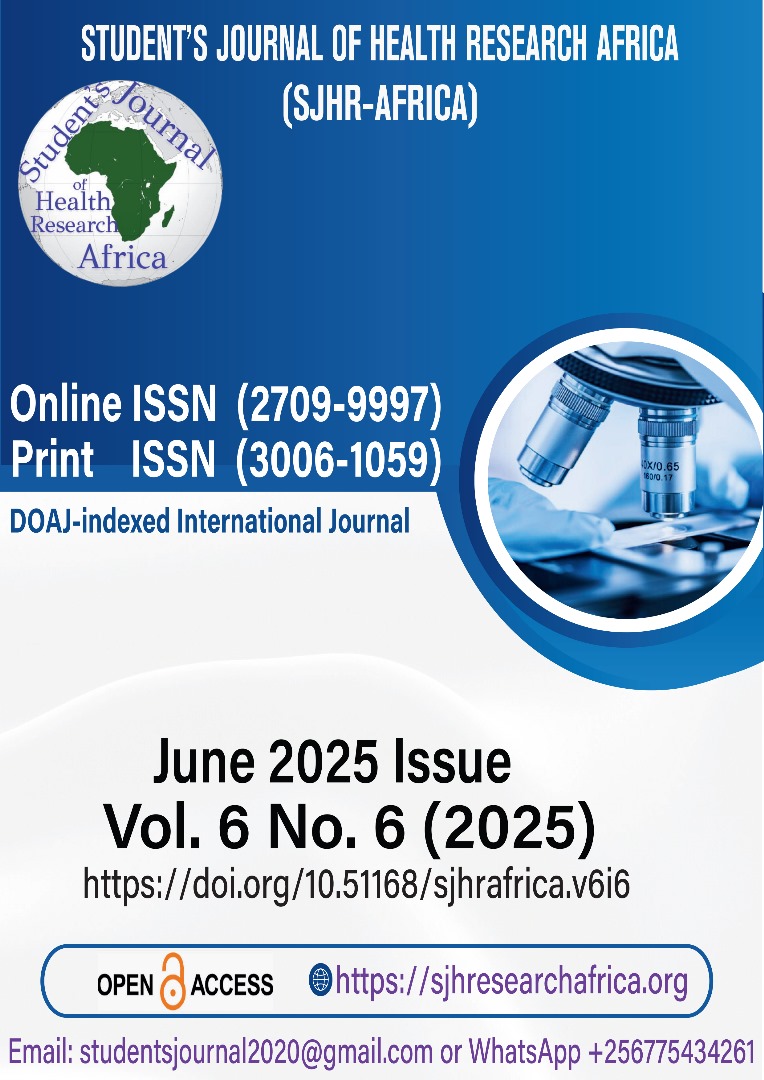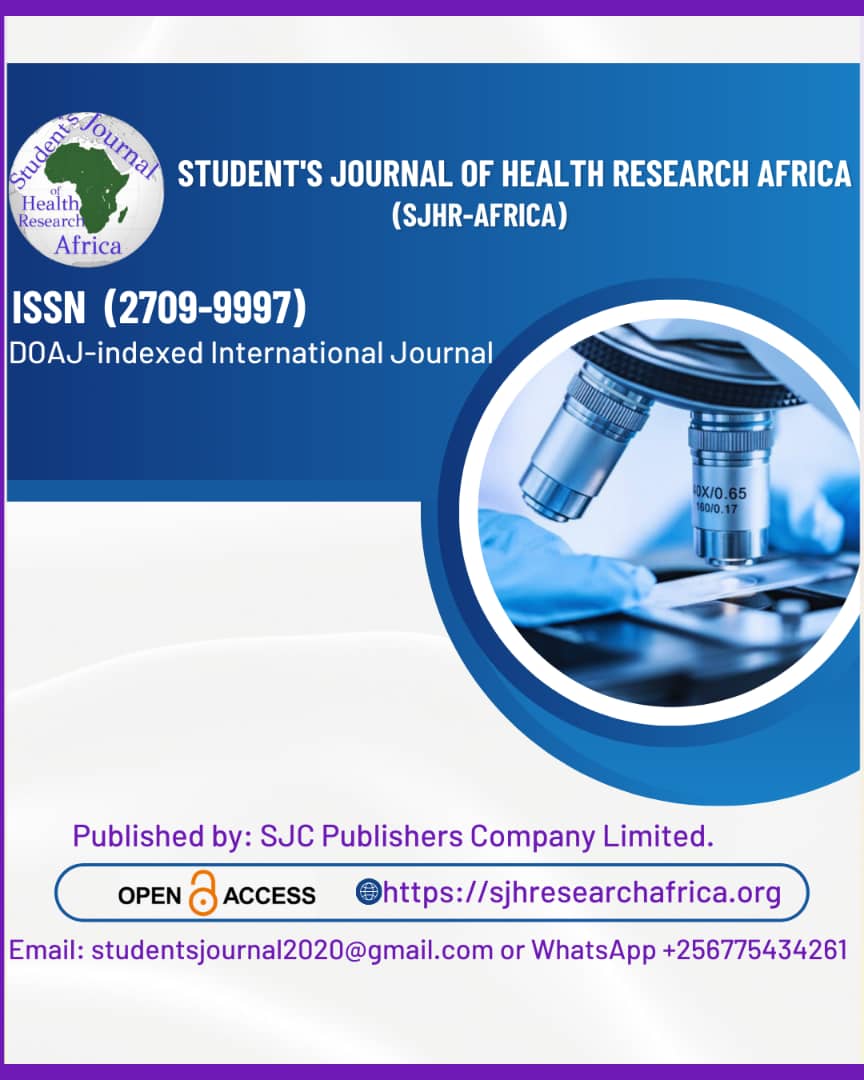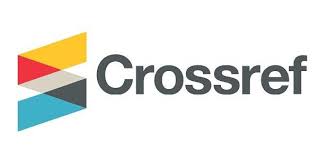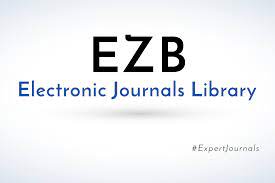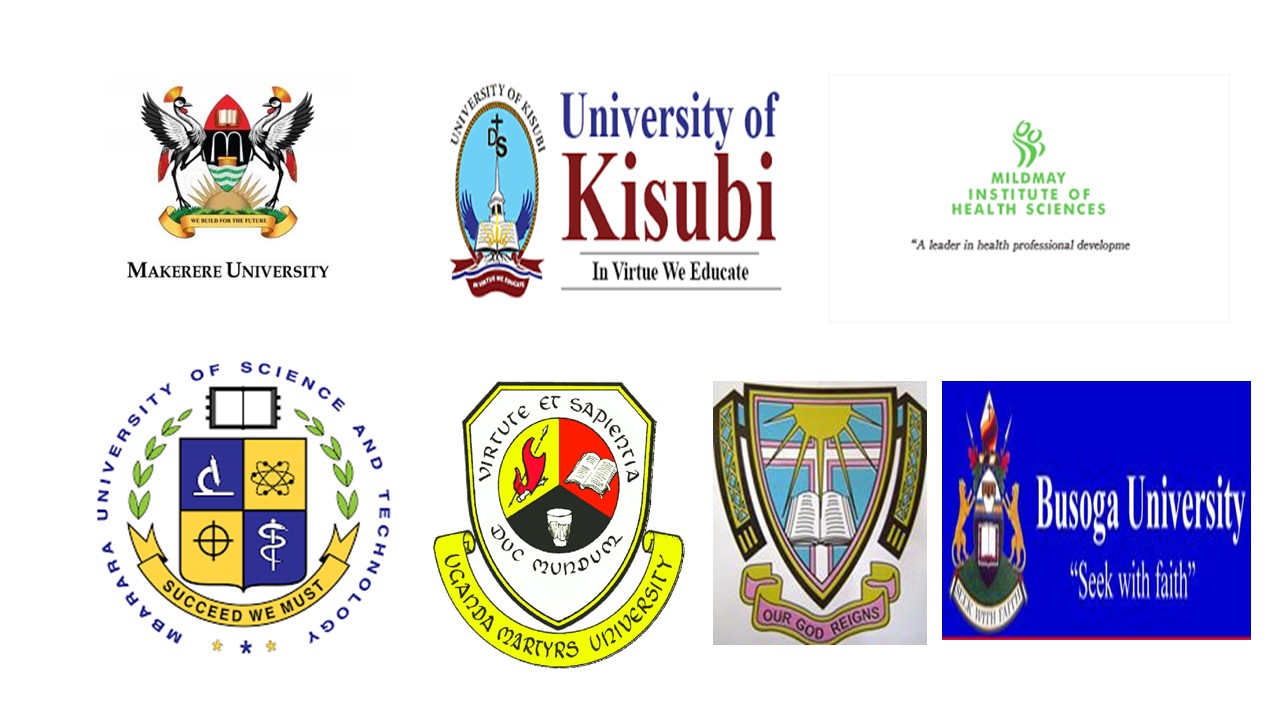A CROSS-SECTIONAL STUDY ASSESSING THE IMPACT OF ILLEGAL DUMPING OF WASTE MATERIAL BY FISHERMEN AND COMMUNITIES ON RIVERINE BIODIVERSITY IN SELECTED AREAS OF THE EASTERN CAPE PROVINCE, SOUTH AFRICA.
DOI:
https://doi.org/10.51168/sjhrafrica.v6i6.1634Keywords:
Illegal dumping, Waste Management, Riverine Biodiversity, Fishing Communities, Eastern Cape, Environmental Impact, Biodiversity Assessment, Sustainable Fishing, Pollution, Community EngagementAbstract
Background
Illegal dumping of waste by fishermen and surrounding communities has emerged as a serious environmental issue in the Eastern Cape Province of South Africa, with adverse effects on riverine biodiversity. Although pollution is globally acknowledged as a threat to freshwater ecosystems, limited studies have focused specifically on how community-driven illegal dumping affects riverine environments in this region. This study aimed to assess the impact of illegal waste dumping by fishermen and local communities on riverine biodiversity in selected areas of the Eastern Cape.
Methodology
A cross-sectional mixed-methods design was adopted. Study sites were selected based on high fishing activity and visible waste accumulation. Quantitative data were obtained through biodiversity assessments using established indices, and pollution levels were measured through waste categorization and field observations. Qualitative data were collected through surveys and semi-structured interviews with 45 respondents, including 20 fishermen, 15 community residents, and 10 key stakeholders from local government and environmental organizations.
Results
The study revealed a significant negative correlation between illegal dumping and riverine biodiversity. Heavily polluted sites (pollution levels between 50%–90%) showed decreased species richness and lower organism abundance. Communities near these sites reported increased sightings of waste-related hazards, such as fish die-offs and foul odours. Socio-economic challenges such as unemployment, poor service delivery, and lack of education were identified as underlying drivers of illegal dumping. Many participants lacked awareness of environmental laws or proper disposal methods, and stakeholders cited weak municipal enforcement and insufficient infrastructure as barriers to effective waste management.
Conclusion
Illegal dumping poses a serious threat to freshwater biodiversity in the Eastern Cape. Without intervention, ongoing pollution will continue to degrade river ecosystems and threaten aquatic life.
Recommendations
Improved waste infrastructure, environmental education, and collaborative stakeholder action are urgently needed to curb pollution and support biodiversity conservation.
References
Binns, T. & Nel, E., 2002. The challenges of sustainable development: Policy, strategies, and community engagement in the Eastern Cape, South Africa. Development Southern Africa, 19(3), pp.543-567.
Dallas, H.F. & Day, J.A., 2004. The effect of water quality variables on aquatic ecosystems: A review. Water Research Commission Report, No. TT 224/04. Available at: https://www.wrc.org.za/wp-content/uploads/mdocs/TT-224-04.pdf.
Davies, B., 2011. Pollution in freshwater ecosystems: Sources, impact, and management strategies. Water Resources Management, 25(9), pp.2285-2303.
de Villiers, A., 2016. The impact of pollution on fish biodiversity in South Africa's coastal rivers. South African Journal of Marine Science, 38(3), pp.433-442.
Diedericks, M., McLachlan, A. & Lee, M., 2012. Freshwater management in South Africa: The effect of human activity on river ecosystems. Environmental Management, 50(6), pp.1234-1247.
du Plessis, A., 2014. Environmental governance in South Africa: A focus on waste management. Environmental Development, 11, pp.47-55.
FAO, 2015. The State of World Fisheries and Aquaculture 2015. Rome: Food and Agriculture Organization of the United Nations.
FAO & IUCN, 2020. Promoting sustainable fisheries management in coastal regions. Rome: FAO & IUCN.
Gall, S.C. & Thompson, R.C., 2015. The impact of debris on marine life. Marine Pollution Bulletin, 92(1-2), pp.170-179. https://doi.org/10.1016/j.marpolbul.2014.12.041 PMid:25680883
Garrity, S., Savoy, H. & Moraga, J., 2015. Pollution, overfishing, and small-scale fisheries in the Philippines. Marine Policy, 58, pp.122-131.
Government of South Africa, 2019. National Environmental Management Act (NEMA) Report. Pretoria: Department of Environmental Affairs and Tourism.
Hart, T., Strydom, W. & Clark, B., 2014. Impacts of anthropogenic activities on estuarine environments in the Western Cape. Estuarine, Coastal and Shelf Science, 147, pp.245-256.
Hoornweg, D. & Bhada-Tata, P., 2012. What a waste: A global review of solid waste management. Washington, DC: World Bank. Available at: https://doi.org/10.1596/17388 PMid:22324502
Khoza, S. & Biyase, M., 2022. The symmetric and asymmetric effect of financial development on ecological footprint in South Africa: ARDL and NARDL approach. Frontiers in Environmental Science, 10, 1347977. https://doi.org/10.3389/fenvs.2024.1347977.
Klein, M., 2011. Sustainable livelihoods and fisheries in South Africa: A case study of the Eastern Cape. Ecological Economics, 70(4), pp.703-711.
Le Maitre, D.C., O'Farrell, P.J. & Reyers, B., 2009. Ecosystem services in South Africa: A review. South African Journal of Science, 105(9-10), pp.409-420. https://doi.org/10.4102/sajs.v105i9/10.132
Loubser, M., Jones, P. & Fourie, T., 2020. The socio-economic impact of pollution on small-scale fishing communities in the Eastern Cape. African Journal of Environmental Science and Technology, 14(6), pp.219-231.
McLachlan, A. & Anderson, P., 2017. Waste management and pollution control in coastal and riverine ecosystems. Environmental Pollution, 235, pp.1011-1019.
Miller, K., Gustafsson, M. & López, A., 2018. The impacts of coastal pollution and illegal dumping on artisanal fisheries in Indonesia. Environmental Conservation, 45(3), pp.285-295.
Moses, M. & Simatele, D., 2018. Illegal dumping of solid waste in urban areas: A case study of Johannesburg, South Africa. South African Geographical Journal, 100(3), pp.367-384.
Naidoo, T., Glassom, D. & Smit, A.J., 2011. Plastic pollution in five urban estuaries of KwaZulu-Natal, South Africa. Marine Pollution Bulletin, 62(12), pp.2589-2594.
National Department of Environmental Affairs, 2017. Integrated Coastal Management Act (ICMA). Pretoria: Government of South Africa.
OECD, 2004. Environmental indicators: Development, measurement, and use. Paris: OECD. Available at: https://www.oecd.org.
Pinnock, D., 2013. A review of coastal resource management policies in South Africa. Journal of Coastal Research, 29(3), pp.713-721.
Pretorius, J.C. et al., 2023. Spatial variability of microbial richness and diversity and relationships with soil organic carbon in agricultural soils. Unpublished. Available at: https://abdn.elsevierpure.com/ (Accessed: 12 January 2025).
Resnik, D.B., 2020. What is ethics in research & why is it important? National Institute of Environmental Health Sciences. Available at: https://www.niehs.nih.gov/research/resources/bioethics/whatis/index.cfm.
Shackleton, C. & Blair, A., 2017. Small-scale fisheries and poverty alleviation in rural South Africa. African Journal of Aquatic Science, 42(1), pp.49-59.
Smith, R., Green, J. & Ellis, P., 2010. Marine pollution and its effect on South African estuaries. Marine Pollution Bulletin, 60(9), pp.1440-1446.
Taljaard, S. & Lamberth, S., 2013. Impacts of human activity on the biodiversity of the Eastern Cape's River systems. South African Journal of Aquatic Sciences, 39(3), pp.147-156.
UNEP, 2016. Marine plastic debris and microplastics: Global lessons and research to inspire action and guide policy change. Nairobi: United Nations Environment Programme. Available at: https://www.unep.org.
UNEP, 2017. Marine Pollution and Coastal Ecosystems. Nairobi: United Nations Environment Programme.
UNEP-WCMC, 2020. Protected planet report 2020. Cambridge: UNEP-WCMC and IUCN. Available at: https://www.protectedplanet.net.
Varol, T. & Sgn, J., 2020. Integrating uncertain prior knowledge regarding ecological preferences into multi-species distribution models: Effects of model complexity on predictive performance. Unpublished. Available at: https://www.researchgate.net/.
Weideman, E.A., Perold, V., Ryan, P.G. & Cowie, R.J., 2020. Quantifying changes in litter loads in urban stormwater run-off from Cape Town, South Africa, over the last two decades. Science of The Total Environment, 724, 138310. https://doi.org/10.1016/j.scitotenv.2020.138310 PMid:32268294
Windsor, F.M., Tilley, R.M., Tyler, C.R. & Ormerod, S.J., 2019. Microplastic ingestion by riverine macroinvertebrates. Science of the Total Environment, 646, pp.68-74. https://doi.org/10.1016/j.scitotenv.2018.07.271 PMid:30048870
Yin, R.K., 2018. Case study research and applications: Design and methods. 6th ed. Thousand Oaks, CA: SAGE Publications.
Downloads
Published
How to Cite
Issue
Section
License
Copyright (c) 2025 Sibonelo Thanda Mbanjwa

This work is licensed under a Creative Commons Attribution-NonCommercial-NoDerivatives 4.0 International License.

